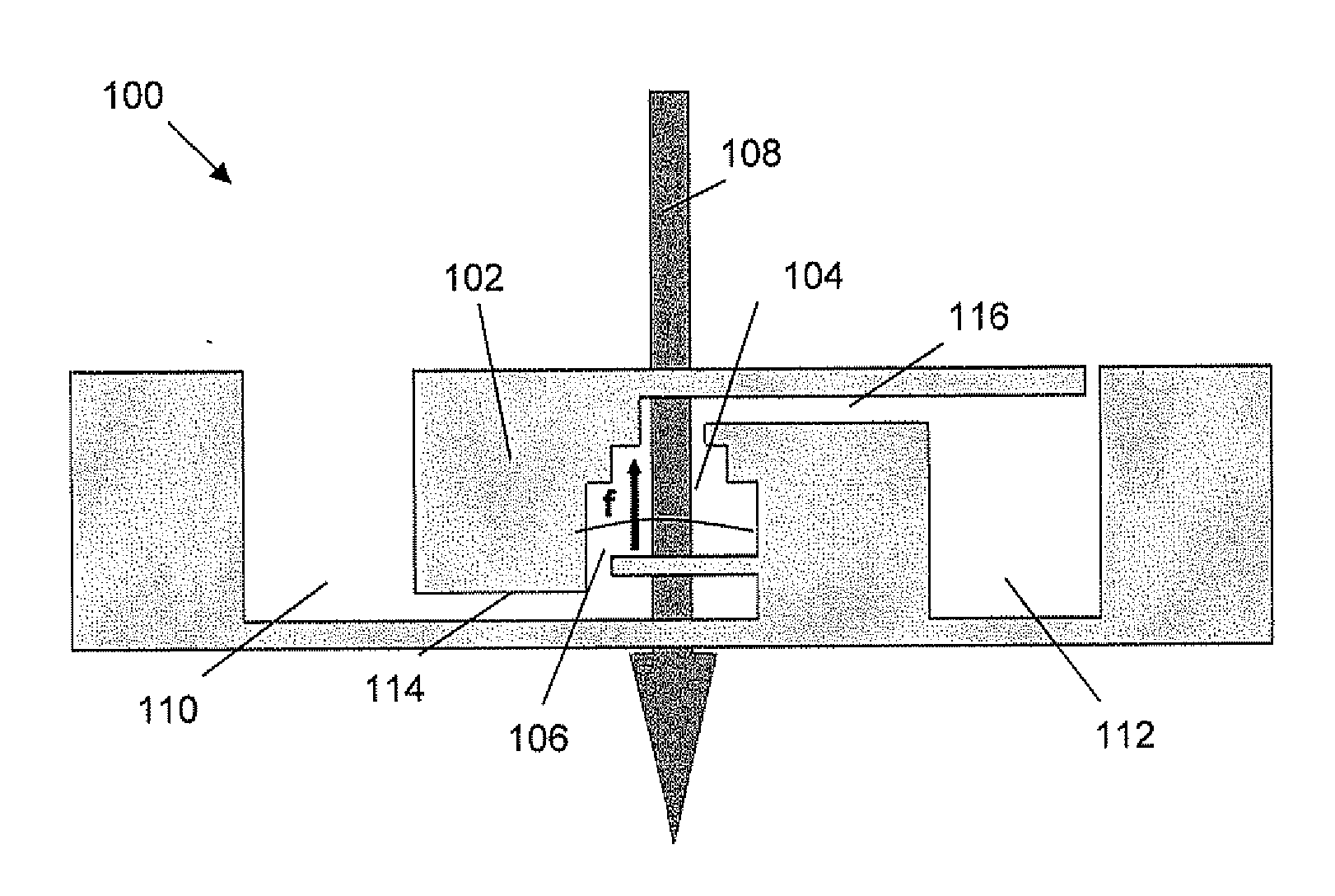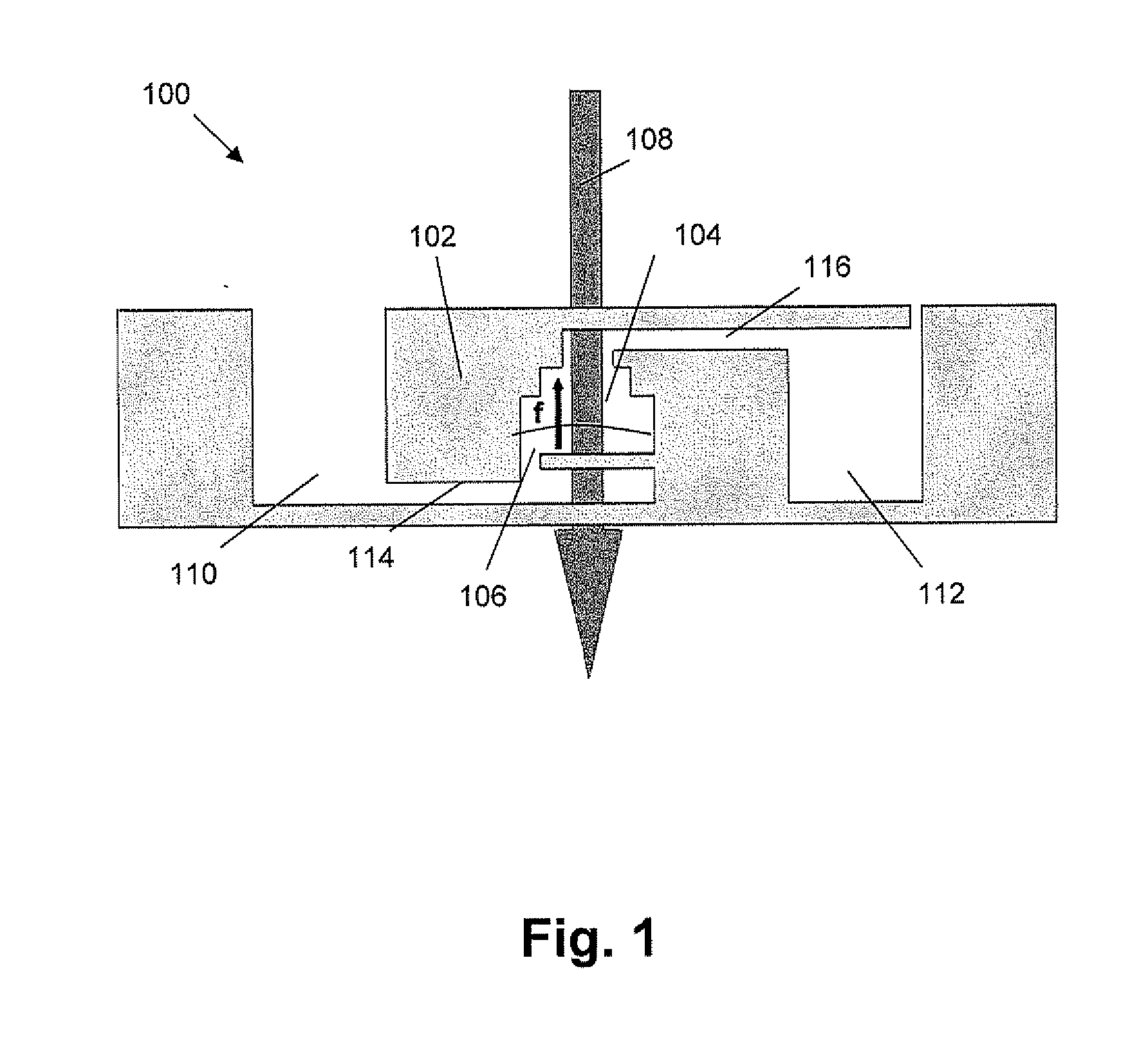Optical characterisation methods and systems
a technology of optical characterisation and optical characterisation, applied in the field of optical characterisation of fluids, can solve the problems of limited amount of fluid material typically available for characterisation, air-liquid surface, measurement disturbance, etc., and achieve the effect of large dynamic range in which optical characterisation can be performed and limited evaporation
- Summary
- Abstract
- Description
- Claims
- Application Information
AI Technical Summary
Benefits of technology
Problems solved by technology
Method used
Image
Examples
first embodiment
[0135]In a first embodiment according to the first aspect, the present invention relates to a device for assisting in optical characterisation of a fluid as described above, comprising the same advantages as described above, wherein the measurement reservoir comprises a measurement reservoir shape such that different cross-sections in a direction perpendicular to the filling direction are present and wherein a large interaction path of the probing beam with the fluid sample is present. The latter is obtained by a measurement reservoir shape wherein each of the cross-sections is adapted for crossing the optical path of an illumination beam used for characterising a fluid. The high overlap with the illumination beam may, for example, be suitable for sample fluids with a small amount of analytes to be detected, as the higher possibility to interact with the sample fluid may lead to an increased detection level. An example of such a structure is illustrated in FIG. 5a, whereas the resul...
second embodiment
[0137]In a second embodiment according to the first aspect, the present invention relates to a device for assisting in optical characterisation of a fluid as described above, wherein the measurement reservoir comprises a measurement reservoir shape such that at least one cross-section of the measurement reservoir in the direction perpendicular to the filling direction does not cross the illumination path. In other words, there may be an intermediate cross-section of the measurement reservoir in the direction perpendicular to the filling direction, that is not in the optical path of the illumination beam. An example of such a structure is illustrated in FIG. 5c and FIG. 5e, whereas the resulting optical detection signal for a stepwise filled measurement reservoir 104 for a measurement reservoir shape as described in FIG. 5c is shown in FIG. 5d. For the ease, the following example is explained for a fixed filling rate. The device 100 comprises at least one measurement reservoir 104 co...
third embodiment
[0140]In a third embodiment according to the first aspect, the present invention relates to a device for assisting in optical characterisation of a fluid as described above, comprising the same advantages as described above, wherein different parts of the measurement reservoir surfaces have different properties for interacting with sample fluid. Typically these properties are the hydrophilic / hydrophobic properties of the surfaces. An example is shown in FIG. 6a. Variations of the filling pressure or input volumetric flow not caused by the measurement reservoir may be applied when using a device according to the present embodiment, as long as they are known such that they can be taken in to account for interpreting the obtained results. For the ease of explanation, the example is explained for a fixed filling pressure, although the invention is not limited thereto. The device 100 comprises at least one measurement reservoir 104 having in one part of the measurement reservoir, referre...
PUM
| Property | Measurement | Unit |
|---|---|---|
| diameter | aaaaa | aaaaa |
| volume | aaaaa | aaaaa |
| volume | aaaaa | aaaaa |
Abstract
Description
Claims
Application Information
 Login to View More
Login to View More - R&D
- Intellectual Property
- Life Sciences
- Materials
- Tech Scout
- Unparalleled Data Quality
- Higher Quality Content
- 60% Fewer Hallucinations
Browse by: Latest US Patents, China's latest patents, Technical Efficacy Thesaurus, Application Domain, Technology Topic, Popular Technical Reports.
© 2025 PatSnap. All rights reserved.Legal|Privacy policy|Modern Slavery Act Transparency Statement|Sitemap|About US| Contact US: help@patsnap.com



